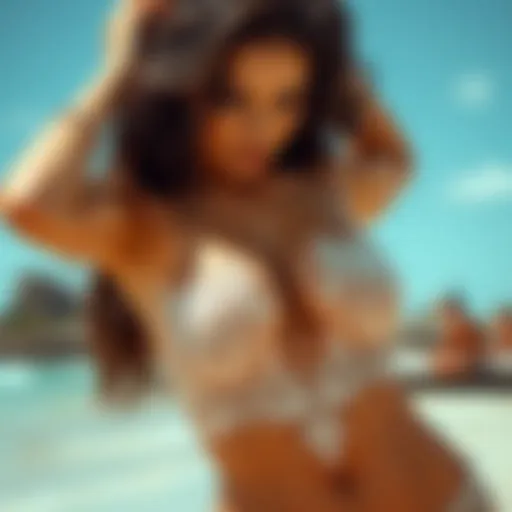The Versatile Women's Bandeau Dress: A Complete Guide
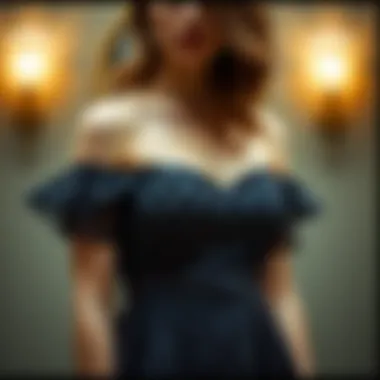
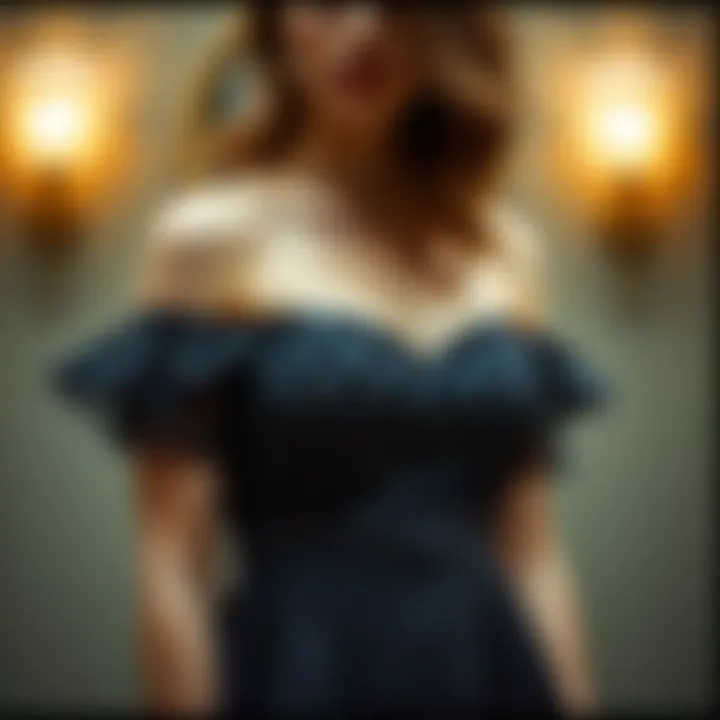
Intro
The women's bandeau dress represents an intriguing amalgamation of style and practicality, a go-to choice for many fashion-forward individuals. Originating as a garment meant to accentuate the shoulders and neckline, this dress type has evolved significantly, adapting to various fashion eras while maintaining its unique charm.
This guide intends to unravel the complexities surrounding the bandeau dress, encompassing its origins, distinct styles, and cultural relevance. We will delve into the various design features that differentiate one bandeau dress from another, explore the occasions where this dress truly shines, and discuss the best ways to care for this versatile garment. Additionally, readers will find insights into appropriate accessories that elevate the bandeau dress to new heights, adapt to different seasons, and consider the socio-economic implications tied to fabric choices.
In this comprehensive exploration, it’s crucial to understand how the bandeau dress fits into the broader fashion landscape, as well as its personal significance in contemporary wardrobes. Let’s embark on this journey to understand the bandeau dress more profoundly.
Historical Context of the Bandeau Dress
Understanding the historical context of the bandeau dress provides a foundational appreciation of its significance in fashion. This stylish garment has woven its way through time, reflecting societal changes and evolving aesthetics. By exploring the roots and journey of the bandeau dress, one can discern its multifaceted role not only as a piece of clothing but also as a marker of cultural expression and identity.
Origins of the Bandeau Style
The bandeau dress can trace its origins back to ancient civilizations. From the simple cloth wraps worn by Greek and Roman women to more structured forms in various cultures, the bandeau has always celebrated femininity. In essence, its design is centered around simplicity, often featuring a strapless top that hugs the silhouette. This blend of elegance and minimalism laid the groundwork for its evolution.
A noteworthy point is that many traditional garments from around the globe resemble the bandeau in structure. For instance, the Indian choli, a short blouse, and the sari, inspire the modern bandeau's forming elements. As these styles traveled and adapted through trade routes, they distinctively influenced Western fashion; what ultimately resulted was an adaptation of these styles into the bandeau we know today.
Evolution Through the Decades
The bandeau dress has undergone significant transformation from its inception to the present day. In the early 20th century, it began seeing mainstream popularity, particularly during the flapper era, where the silhouette shifted towards a more boyish figure with dropped waistlines. The post-war years brought a wave of change—designers like Dior and Chanel played a role in reviving and celebrating curves, leading to the bandeau becoming prevalent in eveningwear.
As decades progressed, the bandeau dress became synonymous with various cultural movements. In the 1960s, it was embraced by the counterculture, associated with freedom and rebellious spirit. The minimalist lines of the bandeau allowed for both casual and formal iterations, making it a staple wardrobe choice for women across different subcultures. Fast forward to the 1980s, and the bandeau had transitioned into vibrant, bold colors and patterns, reflecting the opulence and excess of that era.
Cultural Influences on Design
Cultural factors have heavily influenced the design and acceptance of the bandeau dress. In various societies, the garment symbolizes empowerment and body autonomy. For example, in the 1960s feminist movement, the bandeau was often worn as a rejection of conventional femininity and an embrace of personal expression.
Additionally, prominent public figures have also played a vital role in shaping the bandeau's image. For instance, celebrities like Beyoncé and Rihanna not only sport the bandeau but also elevate it to high fashion through their unique personal styles. These influences catalyze discussions around body positivity and clothing choices, encouraging women to express themselves without the constraints of traditional fashion norms.
As we delve deeper into the characteristics and functionalities of the bandeau dress in subsequent sections, acknowledging its historical context enriches our understanding of how this garment remains relevant in today’s fashion landscape. It is not merely a piece of cloth; it represents a tapestry of narratives stitched through time.
Defining Characteristics
Understanding the defining characteristics of the bandeau dress is essential for both stylists and everyday fashion enthusiasts. These attributes not only shape the aesthetic appeal of the garment but also inform choices around comfort, adaptability, and usage. The bandeau design offers a striking yet practical option for various occasions, emphasizing the need for a closer look at its core aspects.
Cut and Silhouette
The cut and silhouette of a bandeau dress play a pivotal role in its appeal. Typically defined by a streamlined and fitted form, the bandeau dress often features a straight-cut bodice that emphasizes the shoulders and arms. This minimalist approach allows for flexibility in wearing styles, ranging from casual to more glamorous settings.
The absence of straps in standard bandeau dresses highlights the upper body, offering a fresh take on silhouette and allowing for diverse neckline shapes. It can create an elongated appearance for the torso, making it a desirable option for many. Tunic styles, for instance, provide ample room at the waist while keeping the overall look chic.
Moreover, the rise in popularity of layered bandeau options brings forth a unique twist. A layered approach can add volume and movement while adhering to the core principle of simplicity. This makes it exceedingly important for wearers to consider their body shape and proportions when selecting the dress's cut, ensuring the silhouette flatters rather than overwhelms.
Fabric Choices
Choices of fabrics are crucial in determining the overall comfort and wearability of the bandeau dress. Lightweight materials like cotton and linen remain perennial favorites for summer looks, allowing breathability while maintaining structure. In recent years, innovations in fabric technology have introduced options like moisture-wicking blends that are not only functional but also stylish.
On the other hand, fabrics such as silk or satin can elevate the bandeau dress for evening wear, imparting a sense of luxury. Such fabric choices lend themselves to fluid draping, enhancing the appeal of the dress’s silhouette. It’s essential to consider the textural attributes of these materials, as they can affect how the dress sits on the body. A well-balanced blend of comfort and style ensures that the bandeau dress can transition smoothly from day to night.
When selecting fabric, factors such as skin sensitivity and ease of care should be top of mind. Some fabrics may require special handling, particularly those that often crease easily or are prone to staining.
Construction Techniques
The construction techniques used in making bandeau dresses significantly influence their durability, fit, and style. Often, a seamless approach is employed to create a smooth line, which not only enhances comfort but also minimizes irritation at the seams.
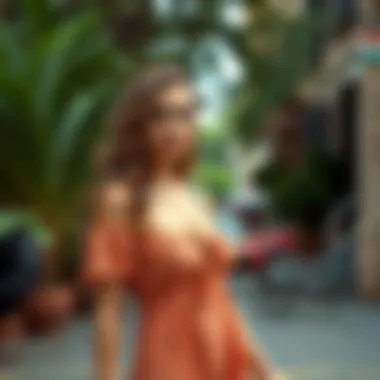

High-quality bandeau dresses may feature padded or structured bodices for added support. This technique can prevent slippage, allowing wearers to feel secure and confident. Features such as stretchable linings and hidden elastic bands play a crucial part in ensuring that the dress fits well without compromising on comfort.
Furthermore, techniques like boning might be applied discreetly along the sides to maintain shape while allowing flexibility in movement. Understanding these construction elements enables buyers to appreciate craftsmanship, enhancing the decision-making process when investing in a bandeau dress.
"The right construction can transform a simple bandeau dress into a statement piece that resonates with the wearer’s individual style."
In summary, diving into the defining characteristics of the bandeau dress reveals layers of detail that go beyond mere fashion choices. From the meticulous cut and silhouette, through thoughtful fabric selections, to the precision in construction techniques, every aspect contributes to the garment's allure and functionality. Fashion professionals and casual wearers alike stand to benefit from a deeper understanding of these elements, enhancing their style and wardrobe versatility.
Styling the Bandeau Dress
The way you style a bandeau dress plays a significant role in its versatility and overall appeal. Given the unique cut and fit of a bandeau, it can serve a multitude of purposes, adapting to whatever occasion may come knocking at your door. Understanding the nuances of styling can transform a simple piece into a fashion statement, ensuring it shines, regardless of the season or event. This section dives deep into specific aspects of styling the bandeau dress, helping you grasp its benefits and considerations.
Seasonal Styling Tips
Spring Looks
Spring looks for the bandeau dress often capture the essence of renewal. Light fabrics in pastel colors or floral patterns epitomize this season. The key characteristic is the use of airy materials that allow for comfort as temperatures rise. This makes the bandeau a beneficial choice for those looking to embrace warmer days without sacrificing style. A unique feature here is the lightweight layering; you can even throw on a denim jacket or a lightweight cardigan when the evenings turn breezy. The advantage lies in its adaptability, while a potential disadvantage could be the need to consider skin protection from the sun.
Summer Outfits
During the sweltering summer months, bandeau dresses really come into their own. Bright colors and tropical prints can bring a splash of life to your wardrobe. The key characteristic for summer outfits is the inclusion of breathable fabrics like cotton or linen, which are popular choices for maximum comfort. Their benefit includes being easy to pack for holidays, making such dresses excellent travel companions. However, a downside might be the need for careful choice in undergarments, as visibility is a factor, so selecting styles that work seamlessly with the bandeau is crucial.
Autumn Combinations
As the leaves begin to fall and temperatures dip, bandeau dresses can transition beautifully into autumn. Pairing the bandeau with a long-sleeve top or a stylish turtleneck can provide that desired warmth. The key characteristic here is layering, an essential aspect as it opens up a variety of styling choices. This approach makes it a great option for those keen on showcasing their personal style during this season. Moreover, the vibrant earthy tones can amplify the outfit’s appeal. The drawback might be that layering can restrict the fluidity of the dress if not done correctly.
Winter Layering
Winter is not the first season that comes to mind for bandeau dresses, but clever layering can change that perception. Combining a bandeau dress with tights and a chunky knit sweater creates an unexpected blend of styles. The key characteristic of winter layering is the focus on warmth without losing fashion sense. This makes it a viable option for creative fashion enthusiasts. When done right, the unique feature of mixing textures can elevate the entire look. The disadvantage, however, is that heavy layers may run the risk of feeling bulky, which means proportion and balance become key.
Accessorizing the Bandeau
Choosing Jewelry
When it comes to accessorizing, jewelry can elevate a bandeau dress to a new level. The key characteristic of choosing jewelry for this dress type hinges on balance; a simple bandeau calls for elegant yet understated pieces. This can be a favorable choice since the right jewelry can draw attention to the shoulders and neckline, which often take center stage with this silhouette. A unique feature to consider is the layering of necklaces or statement earrings. However, overdoing the bling can detract from the simplicity that many seek when wearing a bandeau.
Footwear Pairings
The choice of footwear can greatly influence the vibe of a bandeau dress ensemble. Casual options like sandals or flats lend a relaxed feel, while high heels can amp up the elegance factor. The key characteristic here is versatility; having a range of footwear available means adapting to various environments becomes effortless. Footwear becomes a beneficial addition because it helps accentuate the ankle, which is often flattering. Yet, poor choice can lead to discomfort, especially during prolonged wear.
Bag Selections
Finally, the right bag selection can seamlessly tie together your bandeau dress outfit. Crossbody bags or chic clutches can enhance the overall look without overwhelming it. The key characteristic of bag selection is the balance between functionality and style. A well-matched bag can elevate the whole ensemble, making it a great choice for daily outings or social events. However, opting for an overly large bag can skew proportions, potentially resulting in a mismatched appearance.
Occasion-Based Styling
Casual Wear
For casual days, bandeau dresses can bring a touch of flair to everyday attire. The key characteristic of casual wear is simplicity paired with comfort, making this style an ideal option for relaxed outings or errands. Normally, lighter fabrics or fun prints work well here, adding a pop to the daily grind. However, during cooler weather, transitioning to a casual look may require careful layering to maintain ease of movement.
Formal Events
When it comes to formal events, the bandeau dress can also shine. Choosing classic colors like black or navy can make this style dignified enough for an elegant affair. The key characteristic for formal dressing lies in the details; opting for structured fabrics and refined accessories make it a smart choice for gala dinners or weddings. The versatility can work in favor by allowing personalization through accessories. On the flip side, not all bandeaus are suitable for every formal setting, so careful consideration is necessary.
Party Attire

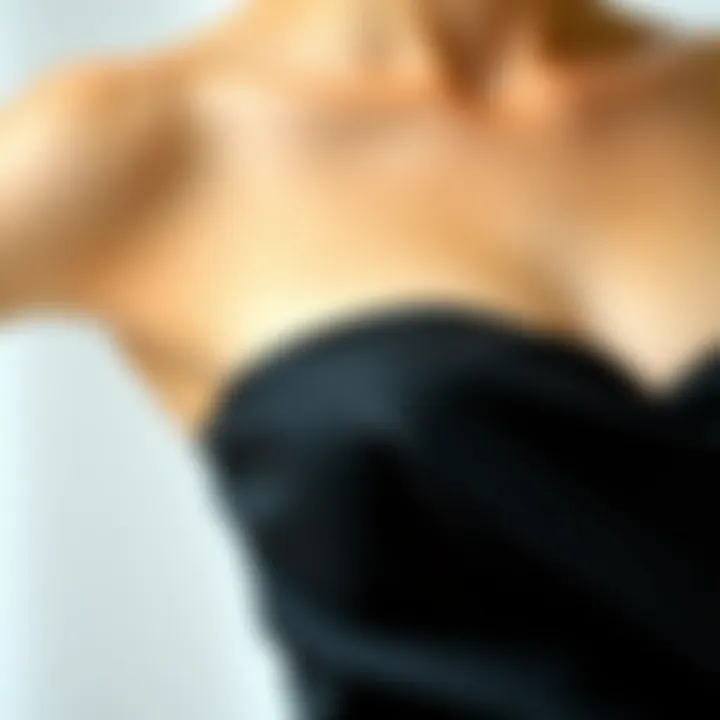
Party attire is where bandeau dresses really get to flaunt their fun side. Bright colors and exciting designs can turn heads. The key characteristic for this occasion is boldness, making it a favorable choice for nightlife. Its design can move effortlessly from dance floors to social gatherings. However, party settings often demand a level of confidence to pull off the look, and the fit of the bandeau can sometimes be a concern, especially if security of wear is not guaranteed.
In summary, understanding the styling options for the bandeau dress serves to not only maximize its potential across different contexts but also empowers individuals to express their personal style creatively.
Occasions and Versatility
The bandeau dress stands out not just for its appealing silhouette but also for its remarkable adaptability across a variety of occasions. Recognizing its versatility is crucial for those wanting to maximize their wardrobe's potential. This section delves into how the bandeau dress can transition smoothly from casual settings to more formal events, all while offering comfort and style.
Everyday Wear
Everyday wear doesn’t have to feel mundane. A bandeau dress brings a refreshing twist to daily life. Whether one is running errands or meeting friends for coffee, a simple, solid-color bandeau dress paired with a denim jacket can create a relaxed yet chic look.
Consider choosing breathable fabrics like cotton or linen for comfort. These materials not only feel good against the skin but also let the wearer breathe easy during daily activities. Adding a pair of flat sandals and a crossbody bag can elevate the look further.
Such outfits exemplify how the bandeau dress can be both practical and stylish enough for everyday adventures.
Event-Specific Designs
For special occasions, the bandeau dress can be tailored to fit the mood and theme of the event. The key lies in the details.
- Materials: Luxurious fabrics like satin or silk can make the bandeau dress suitable for events like weddings or formal gatherings.
- Embroidery and Embellishments: Intricate designs can add a touch of sophistication.
- Color Choice: Dark colors or jewel tones may evoke a sense of elegance, while bright prints can infuse a fun atmosphere.
Layering with a tailored blazer or a statement necklace can also enhance the appeal. This flexibility allows the bandeau dress to remain a staple for various events, meeting the demands of both casual and sophisticated attire without sacrificing comfort.
Travel and Comfort
When it comes to travel, comfort is key. A bandeau dress serves as the perfect travel companion for those on the go.
- Packable: Lightweight materials make these dresses easy to put into a suitcase.
- Minimal Wrinkle: Many bandeau fabrics are casual and won't show creases easily, ideal for long flights or road trips.
- Quick Change: Its simple design allows for easy transitions from day to night with just a few accessory tweaks.
For travelers, a bandeau dress can transition seamlessly from a daytime exploration outfit to a dinner-ready look with just a change of shoes and jewelry.
In summary, the bandeau dress is a marvelous representative of fashion versatility, catering to everyday wear, special occasions, and travel conundrums alike. This makes it a worthwhile addition to any woman's wardrobe, providing a stylish solution for a multitude of scenarios.
"Fashion is about dressing according to what’s fashionable. Style is more about being yourself." - Oscar de la Renta
Ultimately, mastering the art of styling the bandeau dress for various occasions not only enhances personal style but also reflects individuality in a landscape where fashion choices can often seem homogenous.
Care and Maintenance
Maintaining a bandeau dress goes beyond just washing it occasionally; it’s about cherishing your investment in fashion. The bandeau is a versatile piece, often crafted from various fabrics, and its care entails specific considerations to ensure longevity and sustained beauty. Understanding the nuances of caring for this garment can make a significant difference in how it performs over time. Proper care brings forth numerous benefits: you'll not only preserve the dress’s vibrant colors and shape but also extend its wearability, making it a staple that won't need replacing anytime soon.
Washing Guidelines
When it comes to cleaning your bandeau dress, proper washing is crucial. Here are some tips to keep in mind:
- Check the Label: Always start with the manufacturer's care label. It often provides precise directions based on the fabric used.
- Gentle Cycle: If machine washing is permitted, utilize the gentle cycle with cold water. Hot water can cause fading and shrinking.
- Mild Detergent: Use a mild detergent that is gentle on fabrics. Harsh chemicals can weaken the fibers over time.
- Handwashing Alternative: For delicate fabrics like chiffon or silk, handwashing is preferred. Gently agitate the water to avoid excess wear, and make sure to rinse thoroughly.
- Air Dry: Avoid the dryer; instead, hang it up or lay it flat to dry. This prevents misshaping and maintains the garment's fit and design.
Storage Recommendations
Proper storage is key to prolonging the life of your bandeau dress. Consider these guidelines:
- Hang or Fold: Depending on the fabric, hanging may be more suitable to avoid crease marks. However, delicate materials may benefit from being folded to maintain their integrity.
- Use Appropriate Hangers: If hanging, opt for padded or wide hangers to prevent stretching of the fabric. Wooden hangers can sometimes snag delicate materials.
- Avoid Direct Sunlight: Store your dress away from direct sunlight to prevent fading. Consider using a garment bag for added protection.
- Cool, Dry Environment: Store in a cool, dry place to avoid mold and mildew, especially if your dress is made of natural fibers.
Repair Techniques for Bandeau Dresses
Nothing lasts forever, but knowing how to perform repairs on your bandeau dress can save you time and money. Here are some essential techniques:
- Sewing Minor Tears: For small tears, hand-sewing with a needle and thread mimicking the original fabric’s stitching can work wonders. If you’re unsure, fabric glue may also be an option for quick fixes.
- Reinforcing Stitches: If you notice any threads coming loose, it’s wise to reinforce the stitching before it turns into a larger problem.
- Professional Alterations: For significant issues or alterations, consult with a tailor. They have the expertise to make changes without compromising the original design.
- Replace Elements: If your bandeau dress has zippers or buttons, learn how to replace these parts. It’s often simpler than it seems and can breathe new life into your dress.
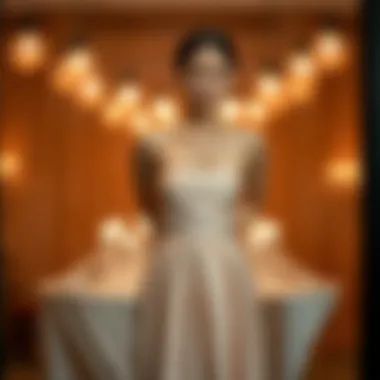
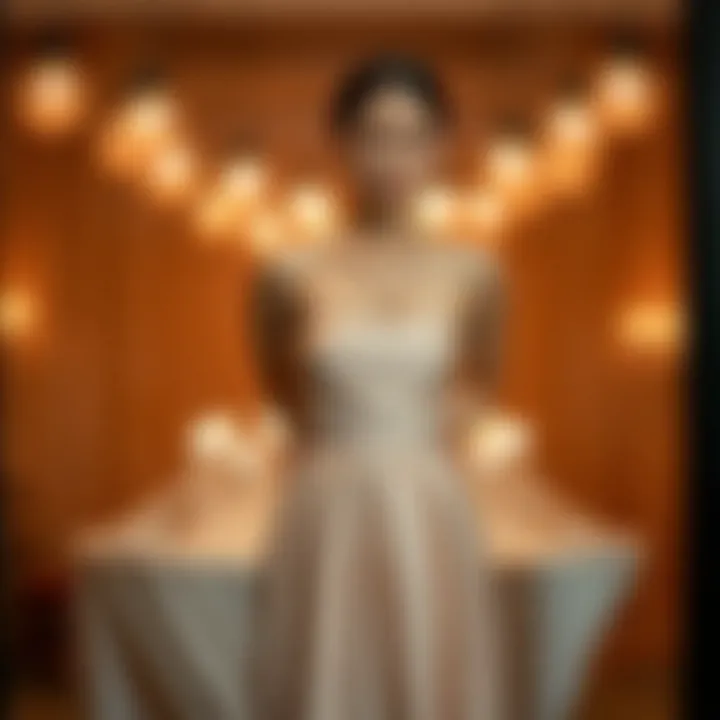
"Taking proper care of your bandeau dress not only enhances its longevity but also aligns with a more sustainable approach to fashion consumption."
By being meticulous about care and maintenance, you ensure that your bandeau dress remains a beloved and fashionable piece in your wardrobe for years to come.
Sustainability and Ethical Considerations
The conversation around fashion is increasingly entwined with discussions about sustainability and ethical practices. Today, consumers are not just looking for what looks good but also how clothing is made and from what materials. This section explores the significance of these considerations as they pertain to the bandeau dress, a piece that can be both a stylish choice and a responsible investment for modern wardrobes.
Impact of Fabric Choices
When we talk about the fabrics that make up the bandeau dress, the implications can be far-reaching. The choice between synthetic and natural materials often dictates the environmental footprint of production. For instance, cotton is a popular choice due to its breathability and comfort, but conventional cotton farming can involve significant pesticide use, which is detrimental to both the environment and the farmers’ health. In contrast, organic cotton offers a more sustainable option, as it is grown without toxic chemicals, making it better for the planet.
Synthetic fabrics like polyester and nylon, while durable, are derived from petroleum and can take hundreds of years to decompose. Moreover, they are often responsible for microplastic pollution in our oceans. Designers can choose recycled polyester, which repurposes plastic waste, to mitigate some of these impacts.
In summary, when selecting a bandeau dress, evaluating fabric choices is crucial. Opting for sustainable materials aids both the ecosystem and the ethical fabric of the fashion industry.
Ethical Manufacturing Practices
The journey of a bandeau dress doesn’t end with fabric selection; how those fabrics are transformed into clothing plays a pivotal role in sustainability. Ethical manufacturing includes fair wages, safe working conditions, and environmentally responsible practices. Brands that prioritize these values often provide transparency about their supply chains, enabling consumers to make informed decisions.
Factory practices vary widely across the globe. For instance, companies like Patagonia champion fair trade and environmentally-friendly practices.
- Fair wages empower workers, allowing them to lead healthier lives.
- Appropriate workplace safety standards minimize health risks and accidents.
- Sustainable energy practices can dramatically reduce the carbon footprint of production.
By supporting brands that adhere to ethical manufacturing, consumers help create a positive ripple effect in the industry.
Lifespan of the Bandeau Dress
A characteristic feature of a well-designed bandeau dress is its ability to stand the test of time. This longevity is beneficial for both sustainability and ethical consumerism. Fast fashion emphasizes quantity over quality, leading to a cycle of overconsumption that the environment cannot sustain.
A thoughtfully crafted bandeau dress can be versatile enough to transition across seasons and occasions, ultimately reducing the need for multiple purchases. Careful maintenance, such as proper washing and storage, can extend the life of this garment significantly.
Investing in a bandeau dress that’s durable means a reduced frequency of shopping trips and a lesser likelihood to contribute to textile waste in landfills. In tune with sustainable living, choosing timeless designs and materials that can withstand changing trends is a sound strategy.
"Sustainable fashion isn’t a trend; it’s a restorative approach to how clothes are designed, produced, and consumed."
The Future of the Bandeau Dress
The future of the bandeau dress holds significant potential as the fashion industry embraces ever-evolving styles and sustainable practices. With a blend of timeless appeal and modern adaptability, this garment is not merely a passing trend but rather an enduring element that resonates with various demographics. As we delve into its future, considerations around consumer preferences, sustainable production, and the digital landscape of fashion play pivotal roles in shaping how the bandeau dress will be perceived and worn.
Emerging Trends
As we look towards the future, emerging trends are prominently reflective of societal shifts in lifestyle and values. One noticeable trend is the movement towards inclusivity. Brands are increasingly crafting bandeau dresses to suit a diverse range of body types. This commitment to variety taps into the idea that fashion should not be exclusive but, rather, should welcome all shapes and sizes.
Another trend is the rise of eco-conscious fabric choices. As consumers become more informed about the environmental impacts of fast fashion, there is a growing demand for dresses made from organic cotton, recycled materials, and other sustainable fabrics. Designers are responding by incorporating these materials into their collections, offering stylish bandeau options that don't compromise on quality or environmental ethics.
- Functional designs: Expect to see detailed elements like pockets or reversible styles that add functionality to fashion.
- Mix and match: Upcoming seasons are likely to emphasize versatility, with bandeau dresses presented as part of coordinated sets, pairing beautifully with various tops or bottoms.
Technological Innovations in Fashion
Technology is weaving itself into the fabric of fashion in remarkable ways, and the bandeau dress is no exception. Innovations like 3D printing and AI design processes enable designers to experiment with structure and form in unprecedented ways. 3D printing, for instance, allows for intricate patterns and personalized fits—an exciting prospect for bandeau dresses that traditionally rely on form-fitting styles.
Furthermore, brands are employing augmented reality (AR) to enhance the shopping experience, allowing customers to virtually try on bandeau dresses before making a purchase, thereby reducing return rates and fostering customer satisfaction. Virtual fitting rooms are increasingly becoming the norm, reinventing how consumers interact with fashion.
Cultural Shifts and Their Influence
Cultural shifts are undeniably influential in shaping the aesthetics and perceptions surrounding the bandeau dress. The rise of social media platforms has made it easier for consumers to curate their personal styles and share them with a broader audience. Influencers and fashion enthusiasts alike have the power to spotlight bandeau dresses, impacting trends in real-time.
Also, with the growing acknowledgement of body positivity, the bandeau dress is becoming a symbol of self-acceptance and confidence. Women of all shapes are embracing this style as a means of self-expression rather than being confined by traditional beauty standards.
"The bandeau dress is a blank canvas, a space for individual expression and creativity in a wardrobe."
Additionally, as global connectivity fosters diverse cultural exchanges, designers are pulling inspiration from around the world, leading to a richer variety of styles, patterns, and colors in bandeau dresses. This global influence creates unique designs that resonate across cultures while keeping pace with modern fashion sensibilities.







